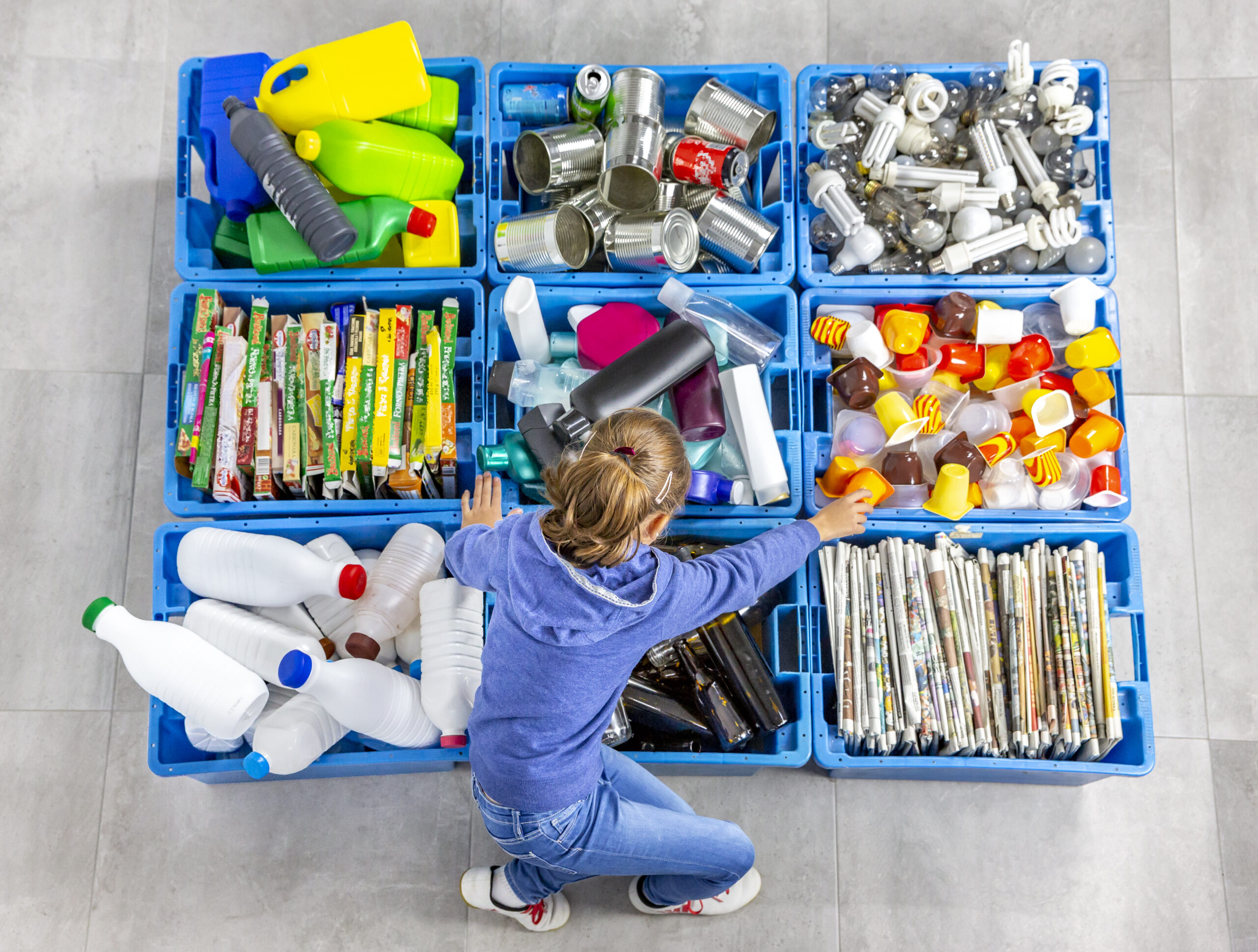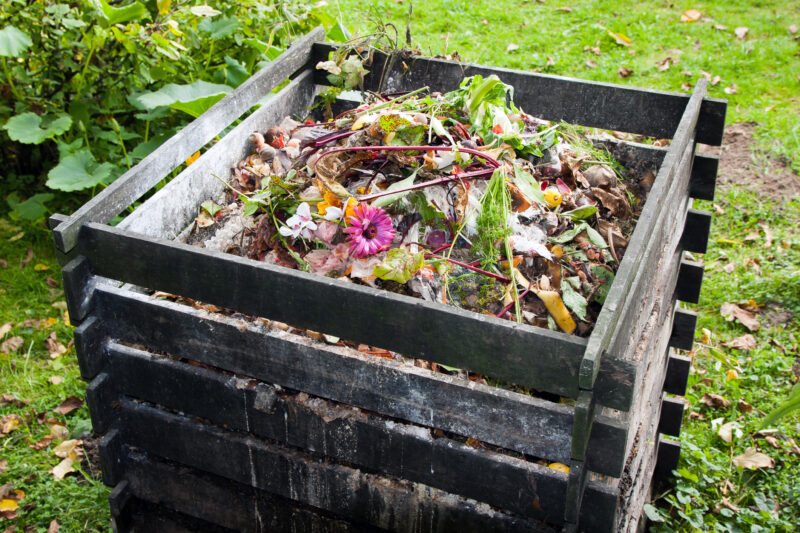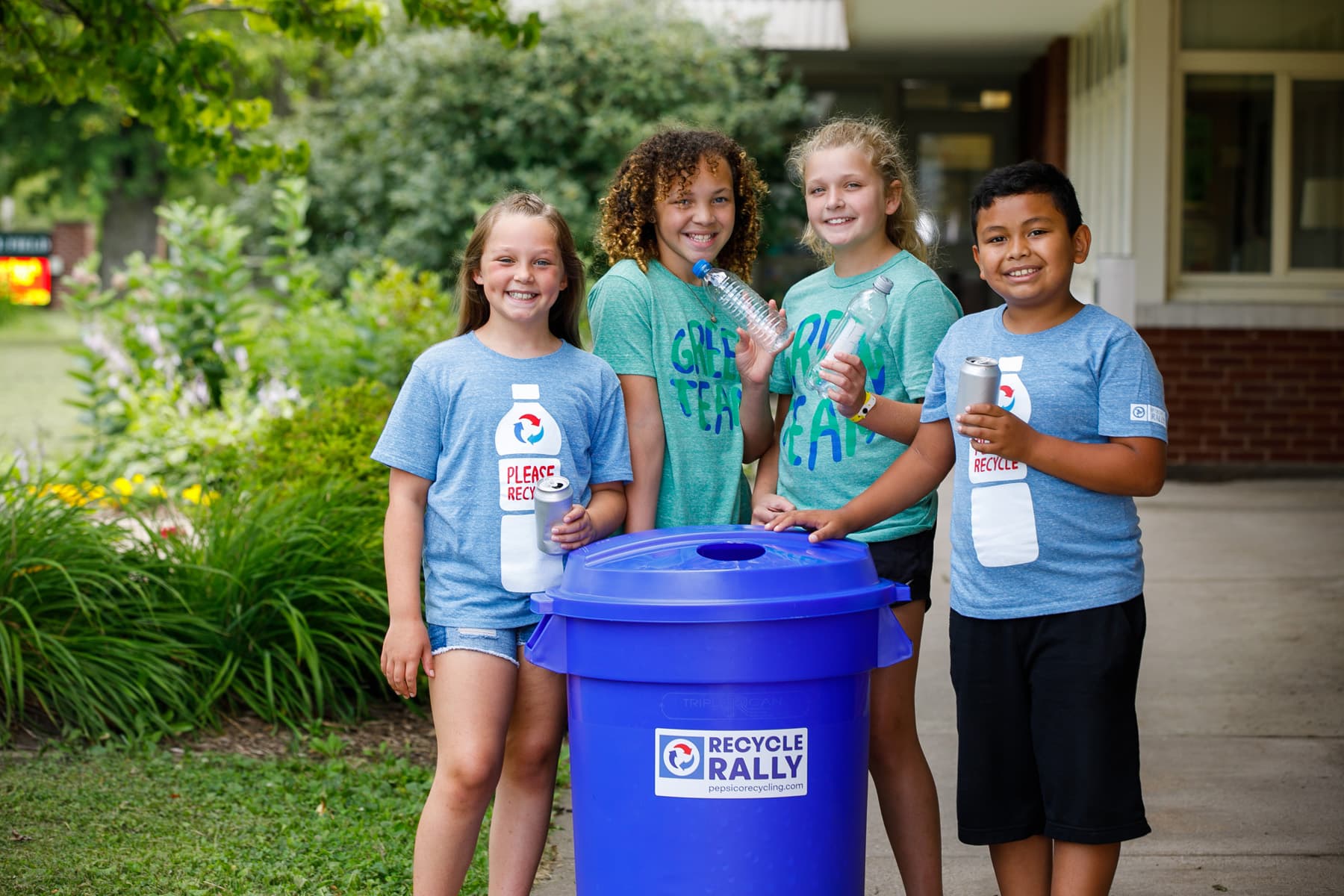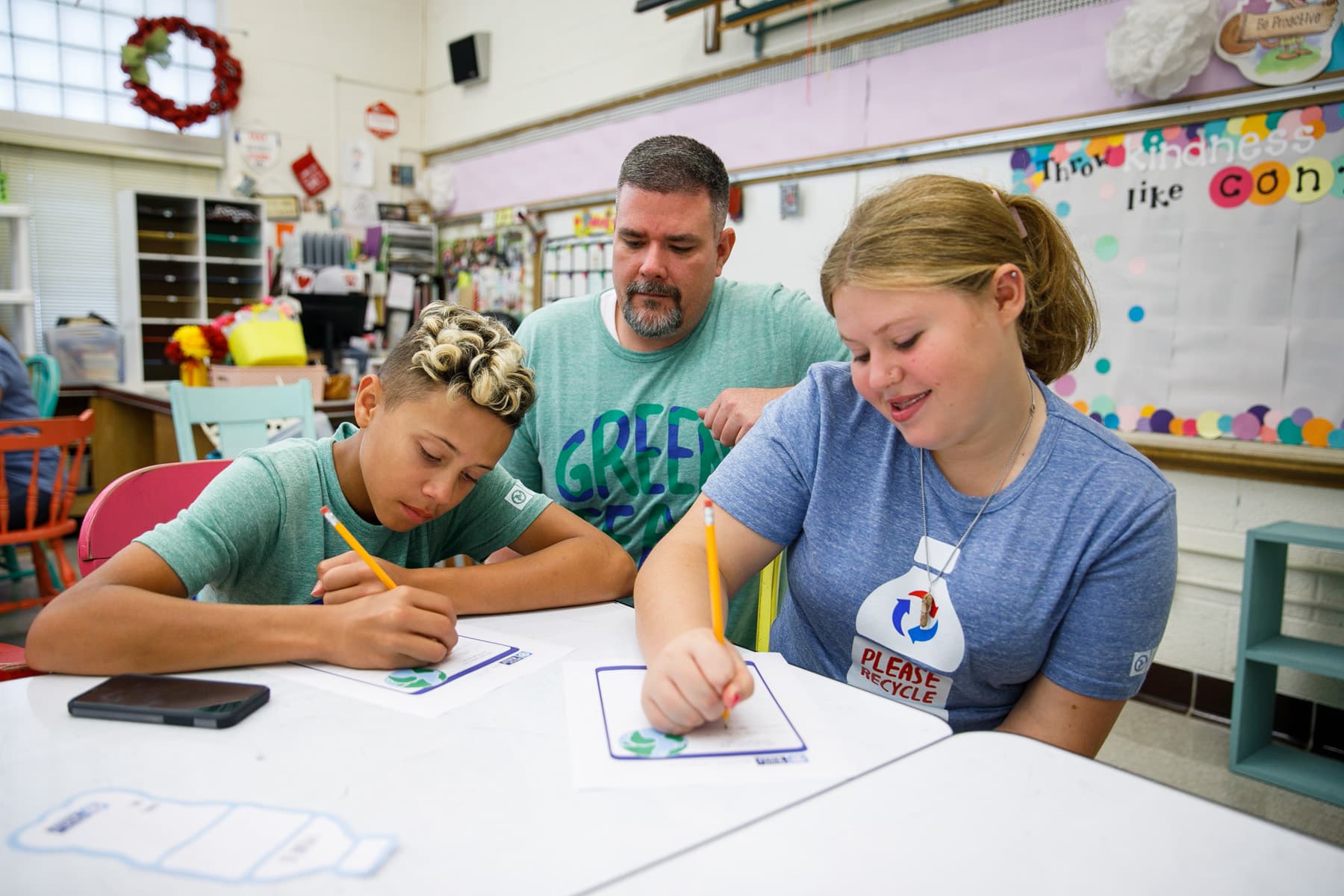School Recycling FAQs
Your questions answered...for every situation!

Recycling is one of the most important steps we can take to protect our planet. Despite our best intentions, though, it can get very confusing. Unfortunately, you may even find yourself wish-cycling (recycling something and “wishing” or hoping that it will work) throughout your day, which contaminates recyclables and potentially renders them unusable. That’s why when students look to you for guidance, it’s so important to know what to recycle. To help you find the answers you’ll need in the classroom, here’s a list of school recycling FAQs.
How does recycling at school work?
Recycling programs vary greatly from one school to another. As one district is learning to recycle the paper and plastic bottles students and staff use, others are ready to start green teams. Ultimately, how well a school recycles will depend on how organized and committed teachers, administrators, and kids are about implementing sustainable practices.
Don’t know where to start? To get started, check out the school recycling resources available in the community and online including the Recycle Rally. Every school needs to establish a recycling routine and using a recycling checklist and goals chart can help everyone stay on task!
What is a waste audit?
A waste audit can be the next step you take as a way of analyzing and understanding a school’s waste stream. It provides information about how much waste (plastic, paper, food, and more) is being produced, recycled, and thrown out each week. Understanding this information can help provide guidance for areas of improvement.
Conducting a waste audit? Here are some helpful resources:
- Use These Forms to Do a Waste Audit at Your School
- Audit Your Recycling Bins to See How You Can Improve
- Lesson Plan: School Waste Audit (great for older students!)
What can be recycled?
Recycling can sometimes be confusing. You’ll need to check with your local waste management office or nearby recycling companies for clear instructions on what is recyclable in your community. You can also search for explainer videos such as this one by PepsiCo Recycling. Guidelines can vary significantly from state to state and even city to city.
Then, you’ll need to find ways to make that information accessible to everyone at school. An effective method is to create displays that teach students and staff about what’s recyclable at your school.
Is composting part of recycling?
Many schools are recognizing the impact of the amount of food waste generated by cafeterias. To fight this issue, some have turned to composting. Using this natural process, discarded food items and scraps are broken down into granular material such as nutrient-rich soil and fertilizer.

Questions about composting have become common school recycling FAQs. One way to bring it to the grades 1-2 classrooms is through the Lesson Plan: Let’s Compost! Students can also begin the composting journey by creating their own microcomposter in a bottle.
What is the life of an aluminum can or plastic bottle?
While common food waste can be composted, food containers like aluminum and plastic cannot. Wondering just how long it takes for certain items to break down and decompose? Share these videos and infographics with your school community to illustrate the importance of recycling!
Why is sorting so important?
A lot of confusion surrounds sorting. Across the country, this process is handled in a variety of ways. Many areas offer single-stream recycling to reduce confusion and encourage more people to participate. As a result, non-recyclable items such as plastic bags, batteries, organic materials, and more often get lumped together, contaminating the recycling stream. This can reduce the likelihood that those things will be recycled.
In schools, it’s important to use the right collection containers. Along with using school displays, The Right Bin Matters is a helpful video to teach students about contamination and why sorting is important.
Where should recycling bins go?
Wondering where to put your school recycling bins? This is one of the most common school recycling FAQs! Following the recommendations in this bin placement guide will help you be more strategic and increase your recycling efforts! Here are some helpful tips:
- Place a recycling bin beside every trash can and in high traffic areas.
- Establish a consistent pattern or logical flow for bin placement throughout your school.
- Use visual cues to make it easy to spot and recognize school recycling bins.
Where can we get school recycling bins?
Does your school have enough bins for your recycling program? If not, there are always ways to get more! Here are some suggestions:
- Follow a lesson plan for building recycling bins.
- Convert trash cans into recycling bins. Get creative with labels and decorations!
- Make a recycling bin frame from plastic bottles.
- Sign your school up for Recycle Rally, a program that frequently offers recycling bins to schools through promotions. You can also accumulate Recycle Rally Reward Points and redeem them for bins.
- Make a recycling bin from newspaper, cardboard boxes, or aluminum cans.
- Network with local businesses and organizations.
- Make a hole-in-one or monster recycling bin.
- Build a dual-chute recycling bin.
What’s a zero waste school?
This is quickly becoming one of the most common school recycling FAQs! As the name suggests, zero waste schools make every effort to reduce how much waste they produce. Focusing on the 5 Rs — reduce, reuse, recycle, rot, reflect — they create strategies for recycling, composting, and even gardening.
Learn more about what zero waste schools are doing and how recycling can be the first great step to becoming a zero waste school. Then to explore the possibilities for your own school, check out this Lesson Plan: Zero-Waste Campaign resource which is perfect for grade 7-8 middle school students.
Who picks up school recycling?
Curious about how school recycling is handled? Most schools have multiple options for pickup, collection, or drop-off of recycled materials. Often, recyclables can be removed by haulers. Their contact information can usually be found on outdoor dumpsters or containers.

First, you’ll want to consider the type of recycling collection and processing you need. Does your school use single-stream, dual-stream, or mixed recycling? What about source-separated programs or drop-off centers? If you’re unsure of where to begin, this chart reviewing school recycling pickup options may be helpful.
How can we recycle in the cafeteria?
You’ve already been working on conserving resources in the classroom, so you may be wondering how to expand on those efforts. A common school recycling FAQ asks how we can be less wasteful in the cafeteria.
The Don’t Waste Lunch! lesson plan for grades 1-2 describes how to reduce the amount of waste in a typical school lunch. It also teaches how to analyze packaging and change personal habits to reduce individual and school-wide waste production. For example, bringing lunch from home in reusable containers is one easy way to make a difference.
How can we introduce students to recycling?
Whether it’s at home or out in the community, most of us have been exposed to recycling. While much of that exposure is likely passive, introducing students to recycling at school can be more intentional.
The approach, of course, will depend on their age group, the setting, and the goal. Look for resources through local organizations, government agencies, and the internet. Keeping things fun, like singing a song with younger kids or watching a video about jobs related to recycling with older students, can increase engagement and make the concepts more interesting!
What lessons can I teach about recycling?
One of the most incredible things about recycling is that the topics are endless. These lesson plans can provide inspiration for all grade levels, while these recycling writing prompts are perfect for older students!
Recycling Basics
- Watch These Adorable Kids Learn About Recycling
- Bin, Bin, Drop the Trash In!
- Fundamentals of Waste
- Teach Students About Recycling Contamination With This Video
- Something From Nothing & the 3 R’s
- Waste Innovations
- Why Recycling Just One Bottle Matters
- The Life Cycle of Recycling
- How Can We Increase Recycling in Our School?
Electronic Waste
Recycling and Nature
Games and Quizzes
- Giant Recycle Drop Game
- Recycling Hidden Pictures
- Test Your Recycling Knowledge Quiz Show Game
- Recycling Crossword Puzzle
- Recycle Word Search
- Quiz: Can You Recycle It?
How can we promote our school recycling program?
Ready to spread the word about your school’s recycling program? Looking for ways to encourage students, faculty, staff, parents, and members of your community to get on board? Hosting events, creating posters, sending letters home, and using social media are just some of the ways you can promote your recycling program.
Hanging signage throughout the school is also a great way to raise awareness and boost participation. Students can decorate their classroom door in honor of recycling, use anchor charts, and post recycling tips to serve as reminders of their pledge to protect the earth.
How can we get students excited about recycling?
How can we get students excited about recycling? Creating a green team or recycling team and having them take on active roles in the planning and execution of sustainable initiatives is one popular and productive way to motivate students. Here’s a quick video sharing how teachers got their students involved in Recycle Rally.

Be on the lookout for inspirational ideas and projects to help them take their recycling efforts to a whole new level. Rewarding their participation with certificates, recognizing custodian heroes, and setting up school recycling contests are additional ways to foster a more active recycling community in your school.
Be sure to also highlight potential career paths for budding environmentalists. Discuss some of the jobs that relate to recycling, from sorter to scientist. Let them know that the efforts they make today at school can have a lasting impact in the future.
Learn More

Recycle Rally
Recycle Rally is a free K-12 program that provides rewards and tools to help enhance recycling at your school!
Explore now
Additional Resources
Our comprehensive library of resources was designed to inspire the next generation of green leaders.
Explore now
